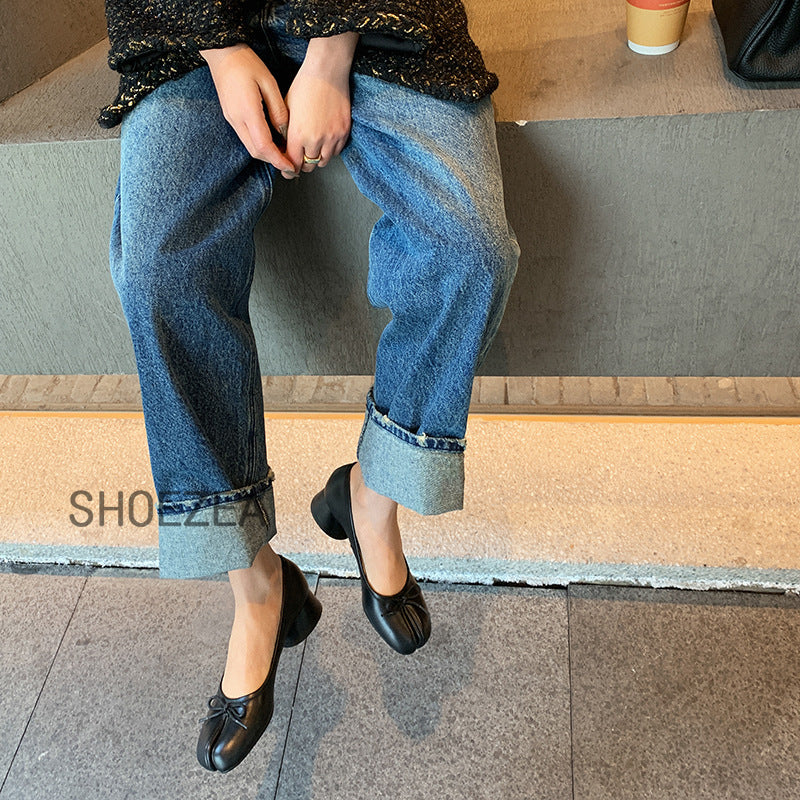For decades, footwear has been designed around aesthetics—sleek lines, pointed tips, and narrow silhouettes. But in recent years, more people have begun questioning whether these designs truly serve the natural structure of the human foot. This is where split-toe shoes, also known as tabi shoes, step in to redefine comfort, posture, and even balance from the ground up.
1. Understanding the Split-Toe Concept
At first glance, the split-toe design might look unusual. However, the idea originates from centuries-old Japanese footwear traditions that valued balance, grip, and connection with the ground. By separating the big toe from the others, split-toe shoes encourage a more natural alignment of the foot. This separation improves stability and strengthens the muscles that help maintain proper posture—something modern shoes often neglect.
Biomechanical studies show that isolating the big toe allows for better control during walking or running. It helps distribute pressure more evenly and reduces strain on the ankles and knees. This means that split-toe shoes aren’t just about style—they’re about science-backed comfort.
2. The Materials Matter
High-quality split-toe shoes are crafted with both flexibility and breathability in mind. The best designs often combine soft leather or stretch-knit uppers with durable rubber soles that provide traction without sacrificing comfort.
Breathable materials prevent moisture buildup, reducing the risk of blisters and skin irritation. The flexibility of the upper allows the shoe to move with your foot rather than against it—an essential feature for people who spend long hours standing or walking.
Some modern designs even integrate memory foam insoles or eco-friendly cork bases, adding adaptive cushioning that molds to your unique foot shape.
3. Who Benefits Most from Split-Toe Shoes?
Split-toe shoes aren’t only for athletes or yoga enthusiasts—they’re for anyone seeking better alignment and long-term comfort.
-
Professionals on their feet all day (nurses, teachers, retail workers) often find relief from reduced toe compression.
-
Fitness and outdoor enthusiasts enjoy the enhanced grip and balance for walking, hiking, and casual workouts.
-
Individuals with wide feet or mild bunions appreciate the natural toe spacing that traditional shoes lack.
Whether you’re walking around the city or practicing mindfulness outdoors, the split-toe structure helps your body reconnect with its natural rhythm of movement.
4. A Minimalist Philosophy for Modern Living
In an age of excess, split-toe shoes embody a minimalist philosophy—simplicity that serves function. Instead of over-cushioning or forcing the foot into unnatural shapes, they promote awareness of how we move. Wearing them feels like giving your feet room to breathe and function as they were designed to.
That’s why brands like Shoezea are embracing this ancient-yet-modern design philosophy, offering styles that bridge tradition and innovation. It’s not just footwear—it’s a quiet revolution in how we think about comfort and well-being.
5. Final Thoughts
The next time you slip into your shoes, think about what your feet truly need: space, balance, and support. Split-toe shoes give you all three. They may look unconventional, but the benefits go far beyond appearance—they help you walk more naturally, stand longer without pain, and reconnect with your body’s innate balance.
Comfort doesn’t begin with the cushion—it begins with your toes.

